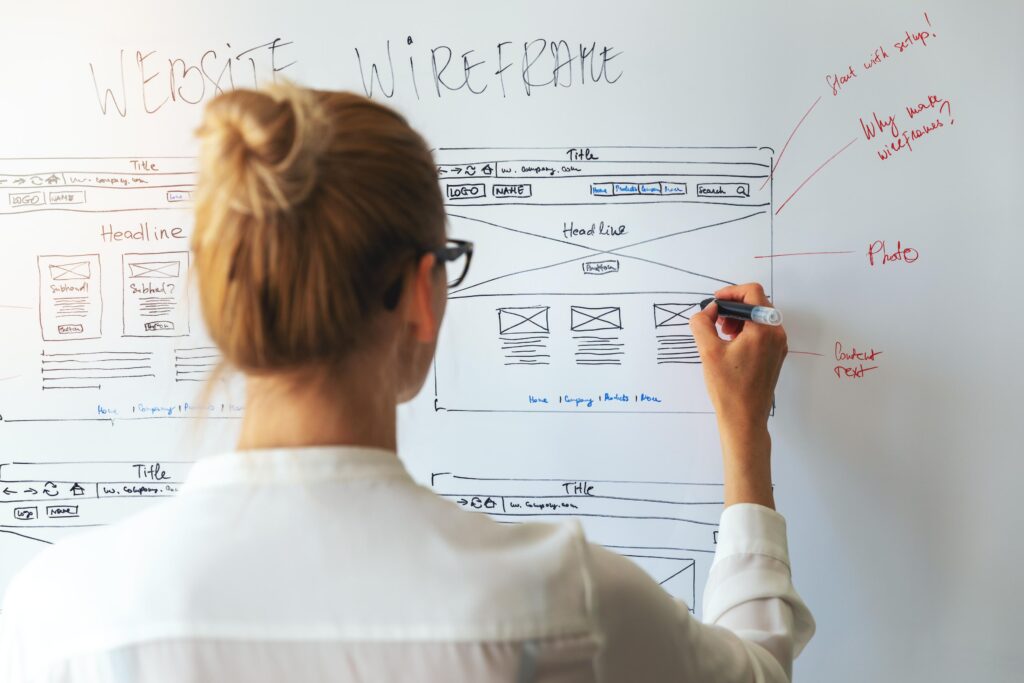Whether your site’s stuck in a time warp, loading like it’s 2009, or just not converting the way it should, a redesign can make all the difference. But here’s the thing, a website redesign is not just about looks.
It’s about strategy, structure, performance, user experience (UX), and yes, SEO.
If you’re thinking about a redesign, don’t wing it. A little planning goes a long way. So here’s your go-to, step-by-step website redesign guide to help you stay focused, hit your goals, and launch something you’re proud of.
Step 1: Audit Your Current Website
Before you start designing anything new, take a deep dive into your existing site. What’s working? What’s not? What’s outdated?
Key things to audit:
- Site speed and performance
- Traffic patterns via Google Analytics
- Top and bottom-performing pages
- SEO rankings and backlink profile
- Mobile responsiveness and accessibility

This step is the foundation of a successful redesign. Don’t skip it. You need to know what to keep, what to ditch, and what to improve.
Step 2: Define Your Website Redesign Goals
A new look is nice—but what are you actually trying to achieve?
Set clear, measurable goals like:
- Increase conversions or sales
- Improve mobile usability
- Reduce bounce rates
- Better support SEO strategy
- Streamline the user journey
When you define your website redesign goals, everything else—layout, content, structure—will align to support them.
Step 3: Map Out Your Website Structure and Pages
Think of this as your site’s blueprint. A good site architecture not only helps users navigate easily—it helps search engines understand your content.
How to structure smartly:
- Create a sitemap with all core pages
- Use keyword research to inform URLs and hierarchy
- Keep important content no more than 2-3 clicks from the homepage
- Group pages by topic or intent (great for SEO and UX)

Tools like Miro, Figma, or even a spreadsheet can help you visualize your website redesign structure before diving into design.
Step 4: Refresh or Rewrite Your Website Content
Old content won’t always fit in a new design. This is the perfect time to optimize, rewrite, or consolidate what you’ve got.
Website content tips:
- Update outdated product or service info
- Write clear CTAs for every page
- Make sure each page targets one primary keyword
- Use headers (H1, H2, etc.) to improve readability and SEO
- Add internal links to relevant pages
Your content should do more than fill space—it should guide users and support your search rankings.
Step 5: Prioritize SEO During Your Redesign
This is a big one. Redesigning without planning for SEO can tank your rankings overnight. Don’t let that happen.
How to keep SEO intact:
- Keep or redirect important URLs (set up 301 redirects)
- Use SEO-friendly page titles and meta descriptions
- Optimize images for speed and accessibility
- Make sure headings, alt text, and schema markup are in place
- Submit an updated sitemap to Google Search Console after launch

Use this step to improve SEO, not just preserve it. A redesign is a great chance to make technical improvements, update keywords, and clean up any old SEO mistakes.
Step 6: Design for UX, Not Just Aesthetics
Design isn’t just about pretty colors—it’s about how people use your site. Make it simple, intuitive, and fast.
UX tips for your redesign:
- Use clear navigation with predictable paths
- Make buttons obvious and clickable (no guesswork)
- Optimize for mobile and touch interaction
- Include trust signals (testimonials, reviews, security badges)
- Use white space to reduce overwhelm
Great UX leads to higher engagement, better conversion rates, and longer time on site—all of which are SEO-friendly outcomes.
Step 7: Build and Test Your Redesigned Website
Now that the strategy, content, and design are solid, it’s time to build.
During the build phase:
- Set up staging environment
- Test layout on all devices and screen sizes
- Optimize site speed (compress images, use caching, etc.)
- Double-check redirects and SEO tags
- Test forms, buttons, and links

You want everything tested before it goes live. Think of this as your soft launch—a chance to fix bugs before your users find them.
Step 8: Launch and Monitor the New Website
Launch day is exciting—but don’t hit publish and walk away.
Post-launch checklist:
- Submit new sitemap to Google
- Monitor traffic and rankings in Google Analytics & Search Console
- Watch for 404 errors or broken redirects
- Keep an eye on load time and Core Web Vitals
- Ask real users for feedback
And remember: a website is never done. Keep optimizing, improving, and growing based on real user data.
A Website Redesign Is More Than Just a New Look
If you follow this website redesign checklist, you’ll end up with more than a prettier homepage. You’ll have a site that:
- Converts better
- Ranks higher in search
- Works faster across all devices
- Grows with your business
Redesigns can feel overwhelming—but when you break it down into steps, it’s totally manageable (and kind of fun, honestly).
Planning a redesign but don’t know where to start?
Nerd Rush helps brands revamp their websites with SEO, strategy, and usability in mind—so you don’t just get a better design, you get better results.
Let’s build smarter, together.





